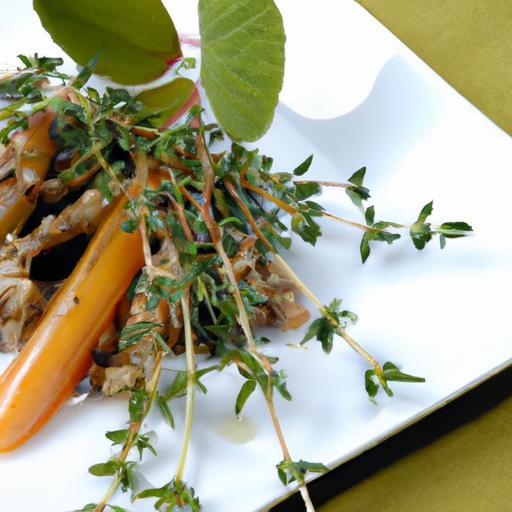Imagine capturing the rich, hoppy essence of your favorite craft beer and transforming it into a luscious, glossy jelly that spreads a burst of flavor onto your morning toast or elevates an artisanal cheese board to new heights. Welcome to the deliciously inventive world of Brew & Jelly – where brewing meets kitchen alchemy and homemade beer jelly becomes your next culinary adventure. In this article, we’ll guide you through the art and science of crafting your own beer-infused jelly, unlocking the secrets to balancing bitterness, sweetness, and texture. Whether you’re a seasoned homebrewer or simply an adventurous foodie, get ready to turn your favorite brews into a spreadable delight that’s as unique as it is unforgettable.
Brew & Jelly: Crafting Your Own Homemade Beer Jelly Recipe starts with choosing the perfect brew to create a vibrant, flavorful base that defines your jelly’s character. Whether you opt for a malty amber ale or a crisp pilsner, the beer’s profile determines the sweetness, bitterness, and aroma your jelly will carry, transforming simple preserves into a gourmet delight.
Prep and Cook Time
- Preparation: 15 minutes
- Cooking: 20 minutes
- Total Time: 35 minutes
Yield
Makes about 2 half-pint jars (approximately 1 cup total)
Difficulty Level
Medium – great for adventurous cooks comfortable with boiling and preserving techniques
Essential Ingredients and Tools
- 1 cup craft beer (choose a brew with robust flavors like amber ale or IPA)
- 2 cups granulated sugar
- 3 tablespoons fruit pectin (use powdered for best consistency)
- 1 tablespoon lemon juice (freshly squeezed for acidity)
- 1/4 cup apple cider vinegar (to balance sweetness and enhance setting)
- Clean half-pint jars with lids (sterilized)
- Heavy-bottomed saucepan
- Wooden spoon
- Candy thermometer (optional but useful)
- Funnel and ladle for jar filling
Step by Step Guide to Brewing and Jelly-Making Techniques
- Prepare your workspace by sterilizing jars and lids in boiling water; set aside on a clean towel.
- Pour 1 cup of your selected craft beer into a heavy-bottomed saucepan; bring it to a gentle simmer over medium heat to reduce slightly-this concentrates the beer’s flavor. Simmer for about 5 minutes.
- Stir in the granulated sugar until fully dissolved, maintaining a steady heat. This step balances the bitterness of the beer and promotes a smooth jelly texture.
- Blend in the fruit pectin gradually, whisking briskly to prevent clumps. Bring the mixture to a rolling boil, stirring constantly.
- Add the lemon juice and apple cider vinegar, stirring well to help the jelly set and enhance the flavor profile.
- Boil vigorously for 1 minute while stirring continually; a proper boil ensures the pectin activates correctly.
- Perform the gel test by placing a small spoonful of jelly on a chilled plate; if it wrinkles when pushed with a finger after cooling, it’s ready.
- Using a funnel, ladle the hot jelly into sterilized jars, leaving a 1/4-inch headspace. Wipe rims clean and seal with lids.
- Process jars in a boiling water bath for 10 minutes to guarantee preservation and shelf-stability.
- Remove jars and let cool completely undisturbed for 12-24 hours; look for sealed lids that do not flex when pressed.
Creative Serving Suggestions and Pairings to Elevate Your Beer Jelly
- Brush a thin layer over warm goat cheese crostini for a balance of tang and malt sweetness.
- Serve alongside a charcuterie board with sharp cheddar, cured meats, and crusty artisan bread.
- Use as a glaze over roasted pork or grilled sausages to add a sweet and bitter complexity.
- Spoon onto a dollop of creamy ricotta or plain Greek yogurt, then garnish with crushed nuts and fresh herbs.
- Mix into vinaigrettes for an unexpected burst of flavor in salads.
Chef’s Notes and Tips for Success
- Beer selection: Lighter beers yield subtler jellies, while darker stouts or porters add richness and depth.
- Pectin type: Choose fruit pectin aligned to the sugar content; low-sugar recipes require special pectin variants.
- Acidity balance: Lemon juice and vinegar help the jelly set and keep flavors bright-do not skip them.
- Storage: Refrigerate after opening and consume within 3 weeks for peak freshness.
- Make-ahead tip: Jelly can be made up to 3 months in advance and stored unopened in a cool, dark place.
- Common pitfall: If jelly fails to set, re-boil with additional pectin following package directions.
| Nutrient | Per 1 Tbsp Serving |
|---|---|
| Calories | 45 |
| Protein | 0 g |
| Carbohydrates | 12 g |
| Fat | 0 g |

For an in-depth look at more jelly-making techniques, check out our Ultimate Guide to Jelly Making. To explore the science behind pectin and its gelling power, visit the Exploratorium’s Jelly Science page.
Q&A
Q&A: Brew & Jelly – Crafting Your Own Homemade Beer Jelly Recipe
Q1: What exactly is beer jelly, and why should I try making it at home?
A: Beer jelly is a delightful fusion of craft beer’s bold flavors with the sweet, spreadable charm of jelly. It captures the hoppy, malty, or fruity notes of beer in a unique preserve that’s perfect on toast, paired with cheese, or even drizzled over roasted meats. Making it at home allows you to experiment with your favorite brews, control the ingredients, and enjoy a truly handcrafted culinary creation.
Q2: What kinds of beers work best for jelly-making?
A: The beauty of beer jelly lies in its versatility! Light lagers and pilsners create a delicate, mildly sweet jelly, while ales, stouts, and IPAs offer richer, more complex flavors with hints of caramel, chocolate, or citrus. For a balanced jelly, start with mid-bodied beers that have moderate bitterness. Avoid overly bitter or highly carbonated beers, as they can affect the setting process.
Q3: What are the basic ingredients needed to make beer jelly?
A: Aside from your choice of beer, you’ll need fruit juice or cider for natural sweetness and acidity, pectin to help the jelly set, and sugar to balance the flavors. Some recipes also call for lemon juice – it brightens the taste and supports the gel’s structure.
Q4: How does the brewing process of beer influence the jelly’s flavor?
A: Beer is a complex concoction of malted grains, hops, yeast, and water. The malt imparts sweetness and body, hops contribute bitterness and aroma, and yeast adds subtle fruity or spicy notes. When making jelly, these flavors concentrate as the liquid reduces and combines with sugar and pectin, giving your jelly a pronounced character reflective of the original beer.
Q5: Can I use homebrewed beer, or must it be commercial?
A: Both work wonderfully! Homebrewed beer often offers fresher, more personalized flavors that make your jelly truly one-of-a-kind. Just ensure your beer is well-filtered and free of excessive sediment to keep the jelly smooth.
Q6: What’s the step-by-step process to make beer jelly?
A: Here’s a creative breakdown:
- Prep your beer and juice: Mix your chosen beer with fruit juice or cider in a saucepan.
- Add sugar and pectin: Stir in sugar and pectin – the secret to jelly’s perfect firmness.
- Cook it: Bring the mixture to a rolling boil, then boil hard for about 1-2 minutes.
- Test for setting: Use a cold plate test or rely on timing from your recipe.
- Jar it: Pour the hot jelly into sterilized jars, seal, and let them cool.
- Enjoy: Once set, your beer jelly is ready to elevate your breakfast or charcuterie board!
Q7: How should I store my homemade beer jelly?
A: Store unopened jars in a cool, dark place – a pantry or cellar works great. Once opened, keep it refrigerated and consume within a few weeks for the best flavor and freshness.
Q8: What are some creative ways to serve beer jelly?
A: The possibilities are endless! Spread it on warm biscuits or sourdough toast, pair it with strong cheeses like sharp cheddar or blue cheese, glaze roasted meats or grilled sausages, or even use it as a cocktail ingredient or dessert topping. It’s a conversation starter on any table!
Q9: Any tips for experimenting with flavors?
A: Absolutely! Consider adding spices like cinnamon, cloves, or star anise for warmth. Citrus zest can brighten the profile, while herbs such as rosemary or thyme add earthiness. Don’t be afraid to mix beers-for example, blending a fruity ale with a dark stout-to craft your signature jelly.
Q10: Where can I find recipes and resources to get started?
A: There are plenty of craft brewing forums, culinary blogs, and specialty cookbooks dedicated to beer jelly and preserves. Many local homebrew shops also offer workshops and kits. Start with a simple recipe online and tweak it-you’ll soon have a batch that’s distinctly yours!
Crafting your own beer jelly marries the art of brewing with the joy of preserving-and opens a world of flavor waiting to be savored. Ready to get brewing and jelling? Cheers to delicious adventures!
In Conclusion
As you embark on your brewing and jelly-making adventures, remember that the magic lies in the marriage of flavors-where the robust character of your homemade beer dances with the sweet, tangy notes of jelly. Crafting your own beer jelly is more than a kitchen experiment; it’s a celebration of creativity, patience, and the art of flavor fusion. Whether you’re spreading it on a crusty slice of bread, pairing it with cheeses, or gifting it as a handcrafted delight, your Brew & Jelly creation will always carry a story-one brewed at home, with passion in every spoonful. So raise your jar high, savor the unique taste you’ve crafted, and let this be just the beginning of many delicious homemade experiments to come. Cheers to your next culinary adventure!


